
Chemical Biology Letters
Scope & Guideline
Bridging Theory and Practice in Biochemistry
Introduction
Aims and Scopes
- Chemical Synthesis and Evaluation:
The journal publishes research on the synthesis of novel chemical compounds and their biological evaluation, particularly in the context of drug discovery and development. - Molecular Mechanisms in Disease:
Research articles often explore the molecular pathways and mechanisms underlying various diseases, including cancer, neurodegenerative disorders, and metabolic syndromes. - Innovative Therapeutics and Drug Development:
The journal aims to highlight advancements in therapeutic strategies, including targeted therapies, vaccine development, and the use of natural products in medicine. - Interdisciplinary Approaches:
Emphasizing a multidisciplinary approach, the journal encourages studies that bridge chemistry, biology, pharmacology, and computational methods to address complex biological questions. - Environmental and Health Impacts of Chemicals:
There is a focus on the impact of environmental chemicals on health, including studies on pesticides and their roles in disease initiation and progression.
Trending and Emerging
- Precision Medicine and Targeted Therapy:
There is a growing trend towards research that emphasizes precision medicine, including the development of small-molecule inhibitors and targeted therapies for specific diseases, particularly cancers. - In Silico Approaches and Computational Biology:
The use of computational methods for drug design, molecular docking, and the prediction of biological interactions is increasingly common, reflecting a trend towards integrating computational tools in chemical biology. - Natural Products and Traditional Medicine:
An emerging interest in the therapeutic potential of natural compounds and traditional medicines is evident, with studies exploring their mechanisms of action and applications in modern therapeutics. - Antimicrobial Resistance Research:
Research addressing antimicrobial resistance through novel compounds and therapeutic strategies is gaining prominence, highlighting the urgent need for new solutions in infectious disease treatment. - Cancer Immunotherapy and Vaccine Development:
The journal is increasingly publishing studies focused on immunotherapy, including vaccine development and the role of the immune system in cancer treatment, reflecting a significant trend in cancer research.
Declining or Waning
- Traditional Medicinal Chemistry:
Research focused solely on traditional medicinal chemistry without integration of biological evaluation is decreasing, as the journal moves towards more biologically relevant and interdisciplinary studies. - Non-targeted Environmental Chemistry:
Studies that lack a direct connection to biological implications or therapeutic applications are becoming less common, as the journal emphasizes research that directly impacts health and disease. - Basic Biochemical Studies:
Basic studies in biochemistry that do not link to therapeutic outcomes or disease mechanisms are seeing a decline, as there is a stronger focus on translational research.
Similar Journals
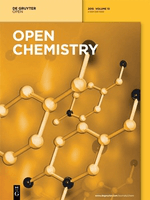
Open Chemistry
Empowering the Global Chemistry Community Through Open ResearchOpen Chemistry, published by DE GRUYTER POLAND SP Z O O, is a distinguished peer-reviewed journal that has been serving the global chemistry community since its inception. With an ISSN of 2391-5420 and an E-ISSN also of 2391-5420, this open-access journal has been accessible to researchers and practitioners alike since 2015, ensuring a wide dissemination of high-quality research findings. Located in Germany, specifically at BOGUMILA ZUGA 32A STR, 01-811 WARSAW, MAZOVIA, POLAND, Open Chemistry aims to publish innovative research across various chemical disciplines, with special attention to miscellaneous chemistry and materials chemistry. It is currently ranked in the Q3 category for both fields as of 2023, reflecting its solid standing within the academic community, with specific ranks of 187/408 in General Chemistry and 153/317 in Materials Chemistry, corresponding to respective percentiles of 54 and 51. Open Chemistry not only enhances the accessibility of cutting-edge research but also serves as a vital resource for students, professionals, and scholars seeking to advance their knowledge in the rapidly evolving landscape of chemical sciences.

BIOCHEMICAL AND BIOPHYSICAL RESEARCH COMMUNICATIONS
Exploring the molecular mechanisms that shape our world.BIOCHEMICAL AND BIOPHYSICAL RESEARCH COMMUNICATIONS, published by Academic Press Inc Elsevier Science, stands as a leading periodical in the fields of biochemistry, biophysics, cell biology, and molecular biology. With an ISSN of 0006-291X and an E-ISSN of 1090-2104, this esteemed journal has been a pivotal platform for the dissemination of groundbreaking research since its inception in 1959, continuing to publish influential findings through at least 2024. It holds a commendable Q2 ranking in Biochemistry and Q1 status in Biophysics as of 2023, reflecting its high impact and relevance in the field, supported by its strong Scopus rankings—ranking #43 in Biophysics and maintaining a presence in the top quartiles of several related categories. Although it is not an open-access journal, it provides critical insights and essential data that cater to researchers, professionals, and students keen on advancing their understanding of complex biochemical and biophysical processes. Its significant contributions to the scientific community underscore the importance of this journal as a reference point for innovative research and collaborative discourse.

Biomolecules & Therapeutics
Pioneering Pharmacological Insights for Global HealthBiomolecules & Therapeutics is a prominent journal published by the Korean Society of Applied Pharmacology, dedicated to advancing knowledge in the fields of Biochemistry, Drug Discovery, Molecular Medicine, and Pharmacology. With an ISSN of 1976-9148 and an E-ISSN of 2005-4483, this journal serves as a vital platform for researchers and professionals to disseminate their findings from 2008 through 2024. Ranking in the Q2 category across multiple relevant fields, including Pharmacology and Drug Discovery, and consistently placing in the 60th to 70th percentiles in Scopus rankings, Biomolecules & Therapeutics exemplifies a commitment to high-quality research and scientific integrity. Although it operates on a traditional access model, readers can be assured of the journal's rigorous peer-review process, ensuring that published articles contribute meaningfully to ongoing discourse in pharmacological and biochemical research. Located in Seoul, South Korea, the journal stands at the forefront of innovation in healthcare, making it an essential resource for academics, students, and industry professionals alike.
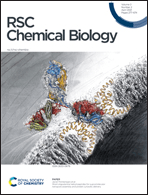
RSC Chemical Biology
Shaping the Future of Scientific Discourse in Chemical BiologyRSC Chemical Biology is a prestigious journal published by the Royal Society of Chemistry, providing a significant platform for researchers in the fields of biochemistry, genetics, and molecular biology. Launched in 2020, the journal aims to disseminate high-quality research that bridges the gap between chemistry and biology, promoting interdisciplinary studies and innovations that are essential for advancements in life sciences. With an emerging impact factor and ranking in the top quartile (Q1) for multiple categories such as Biochemistry and Molecular Biology, RSC Chemical Biology holds a prominent position in the academic landscape, evidenced by its Scopus rankings placing it in the top 20% and 30% of its respective fields. Although it does not operate under an open-access model, the journal's commitment to accessibility is reflected in its rigorous peer-review process and its role in shaping future scientific discourse. Research published in this journal is vital for contributing to our understanding of complex biological processes and fostering innovations that can lead to real-world applications.

BIOORGANIC & MEDICINAL CHEMISTRY
Pioneering Research in Bioorganic ScienceBIOORGANIC & MEDICINAL CHEMISTRY, published by Pergamon-Elsevier Science Ltd, is a prominent journal in the fields of biochemical research and drug discovery, with an ISSN of 0968-0896 and an E-ISSN of 1464-3391. Established in 1993, it has garnered respect and recognition, evidenced by its categorization in various quartile ranks across 2023, including Q2 in Clinical Biochemistry and Pharmaceutical Science. It holds significant Scopus rankings, placing it in the 75th percentile in Pharmaceutical Science and 74th percentile in Organic Chemistry, highlighting its influential contributions to ongoing research and developments. This journal provides a platform for disseminating advancements in bioorganic and medicinal chemistry, focusing on innovative methodologies, therapeutic advancements, and molecular pharmacology. Although it does not follow an open-access model, it remains a key resource for researchers, professionals, and students aiming to stay at the forefront of scientific discovery in the UK and beyond. The journal’s commitment to enhancing knowledge within the biomedical community makes it an essential read for those passionate about this dynamic field.
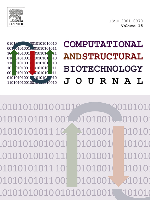
Computational and Structural Biotechnology Journal
Innovating at the Nexus of Computer Science and Molecular BiologyComputational and Structural Biotechnology Journal is a premier open-access journal published by Elsevier, focusing on the intersection of computer science and molecular biology. Since its inception in 2012, the journal has established itself as a leading platform for innovative research, featuring groundbreaking studies in biochemistry, biophysics, biotechnology, and genetics. With a remarkable Q1 ranking in multiple categories, including Biochemistry and Genetics, it stands out for its high impact, evidenced by its strong Scopus ranking percentile scores. As a vital resource for researchers, professionals, and students, the journal aims to foster the dissemination of essential findings that leverage computational techniques to explore complex biological systems. In a rapidly evolving scientific landscape, Computational and Structural Biotechnology Journal serves as an indispensable resource for those looking to contribute and stay abreast of major advancements in the field.
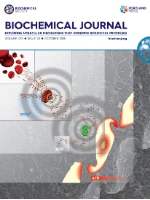
BIOCHEMICAL JOURNAL
Navigating the Complexities of Life at the Molecular LevelBIOCHEMICAL JOURNAL, published by Portland Press Ltd, stands as a leading publication in the fields of Biochemistry, Cell Biology, and Molecular Biology, reflecting a commitment to advancing scientific knowledge since its inception in 1945. With a distinguished Q1 ranking across these categories and impressive Scopus rankings, the journal serves as an invaluable resource for researchers, professionals, and students alike, facilitating critical discoveries and innovative research practices. Although not currently offering open access, the journal provides a platform for high-quality peer-reviewed articles, ensuring rigorous standards in the dissemination of biochemical research. Spanning over seven decades and continuing through to 2024, the BIOCHEMICAL JOURNAL fosters an environment where cutting-edge biochemical research thrives, supporting the global scientific community's efforts to address complex biological questions and enhance our understanding of fundamental cellular processes.
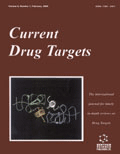
CURRENT DRUG TARGETS
Connecting Researchers to the Future of MedicineCURRENT DRUG TARGETS is a leading peer-reviewed journal dedicated to advancements in the fields of Clinical Biochemistry, Drug Discovery, Molecular Medicine, and Pharmacology. Published by Bentham Science Publishers Ltd, this esteemed journal has solidified its position in the academic community with a 2023 Q2 ranking in several categories, highlighting its influence and relevance in drug research and development. With an ISSN of 1389-4501 and E-ISSN 1873-5592, CURRENT DRUG TARGETS facilitates the dissemination of high-quality articles that explore novel therapeutic strategies and drug design principles. Catered to researchers, professionals, and students, the journal has a commitment to advancing knowledge while addressing contemporary challenges in pharmacological sciences. As it converges from 2000 to 2024, CURRENT DRUG TARGETS remains a vital resource in understanding the complexities of drug action and interaction, making it indispensable for anyone pursuing cutting-edge research in related disciplines.
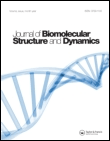
JOURNAL OF BIOMOLECULAR STRUCTURE & DYNAMICS
Advancing Insights in Biochemistry and Structural BiologyJOURNAL OF BIOMOLECULAR STRUCTURE & DYNAMICS, published by TAYLOR & FRANCIS INC, serves as a pivotal platform for the dissemination of original research in the fields of biochemistry, molecular biology, and structural biology. With an ISSN of 0739-1102 and an E-ISSN of 1538-0254, this esteemed journal has garnered attention for its rigorous peer-review process and commitment to high-quality scientific inquiry since its inception in 1981. Ranking in the Q2 quartile for miscellaneous medicine and the Q3 quartile for both molecular and structural biology, it consistently demonstrates a significant impact within its specialties, evidenced by a high Scopus ranking. Researchers, professionals, and students are encouraged to engage with cutting-edge studies addressing the complex interactions and dynamics of biomolecules, making this journal a vital resource for advancing knowledge in the biological sciences. Although it does not offer open access options, its valuable contributions are vital for the ongoing discourse within the scientific community.

BIOSCIENCE REPORTS
Connecting Researchers with Groundbreaking FindingsBIOSCIENCE REPORTS, published by Portland Press Ltd, is a prestigious journal dedicated to advancing the fields of biochemistry, biophysics, cell biology, and molecular biology. Founded in 1981, the journal has established itself as a vital resource for researchers and professionals, boasting a significant impact factor and high rankings within its categories, including Q2 in Biochemistry and Q1 in Biophysics as of 2023. The journal’s commitment to high-quality, peer-reviewed research ensures that it remains an influential platform for the dissemination of cutting-edge scientific findings. While it operates under a traditional subscription model, it offers various access options to accommodate the needs of the scientific community. With ongoing publication through 2024, BIOSCIENCE REPORTS continues to play a crucial role in shaping discussions in the life sciences and fostering innovative research in biology.